Multisensory integration in the superior colliculus requires synergy among corticocollicular inputs
- PMID: 19458228
- PMCID: PMC2805025
- DOI: 10.1523/JNEUROSCI.0525-09.2009
Multisensory integration in the superior colliculus requires synergy among corticocollicular inputs
Abstract
Influences from the visual (AEV), auditory (FAES), and somatosensory (SIV) divisions of the cat anterior ectosylvian sulcus (AES) play a critical role in rendering superior colliculus (SC) neurons capable of multisensory integration. However, it is not known whether this is accomplished via their independent sensory-specific action or via some cross-modal cooperative action that emerges as a consequence of their convergence on SC neurons. Using visual-auditory SC neurons as a model, we examined how selective and combined deactivation of FAES and AEV affected SC multisensory (visual-auditory) and unisensory (visual-visual) integration capabilities. As noted earlier, multisensory integration yielded SC responses that were significantly greater than those evoked by the most effective individual component stimulus. This multisensory "response enhancement" was more evident when the component stimuli were weakly effective. Conversely, unisensory integration was dominated by the lack of response enhancement. During cryogenic deactivation of FAES and/or AEV, the unisensory responses of SC neurons were only modestly affected; however, their multisensory response enhancement showed a significant downward shift and was eliminated. The shift was similar in magnitude for deactivation of either AES subregion and, in general, only marginally greater when both were deactivated simultaneously. These data reveal that SC multisensory integration is dependent on the cooperative action of distinct subsets of unisensory corticofugal afferents, afferents whose sensory combination matches the multisensory profile of their midbrain target neurons, and whose functional synergy is specific to rendering SC neurons capable of synthesizing information from those particular senses.
Figures
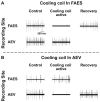
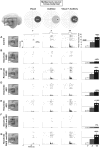
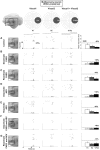
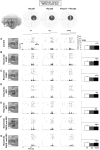
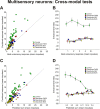
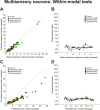
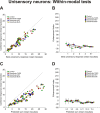

References
-
- Alvarado JC, Vaughan JW, Stanford TR, Stein BE. Multisensory versus unisensory integration: contrasting modes in the superior colliculus. J Neurophysiol. 2007b;97:3193–3205. - PubMed
-
- Anastasio TJ, Patton PE, Belkacem-Boussaid K. Using Bayes' rule to model multisensory enhancement in the superior colliculus. Neural Comput. 2000;12:1165–1187. - PubMed
-
- Benedek G, Mucke L, Norita M, Albowitz B, Creutzfeldt OD. Anterior ectosylvian visual area (AEV) of the cat: physiological properties. Prog Brain Res. 1988;75:245–255. - PubMed
Publication types
MeSH terms
Grants and funding
LinkOut - more resources
Full Text Sources
Research Materials
Miscellaneous
